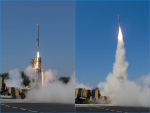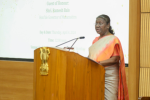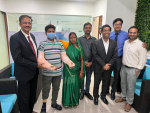July8, 2018
Washington: NASA has recently announced it would give funds to a California-based 3D printing company for finding ways to turn asteroids into giant, autonomous spacecraft, which could fly to outposts in space, the media reported.
Made In Space’s project, known as RAMA (Reconstituting Asteroids into Mechanical Automata), could one day enable space colonization by helping make off-Earth manufacturing efficient and economically viable, Space.com reported.
The company plans to use 3D printing to turn the asteroids into self-flying vehicles by 2030.
The concept received funding through NASA’s Innovative Advanced Concepts programme, which will provide $100,000 for feasibility studies.
“Today, we have the ability to bring resources from Earth,” Jason Dunn, Made In Space co-founder and chief technology officer, was quoted as saying.
“But when we get to a tipping point where we need the resources in space, then the question becomes, ‘Where do they come from and how do we get them, and how do we deliver them to the location that we need?’ This is a way to do it,” he said.
The company is considering sending an advanced robotic “Seed Craft” out to rendezvous with a succession of near-Earth asteroids in space, as part of its long-term project.
The Seed Craft would harvest material from the space rocks, then use this feedstock to construct propulsion, navigation, energy-storage and other key systems onsite with the aid of 3D printing and other technologies.
Thus transformed into autonomous spacecraft, the asteroids could be programmed to fly to a mining station in Earth-moon space, or anywhere else they’re needed.
This approach would be much more efficient than launching a new capture probe (or probes) to every single space rock targeted for resource exploitation, the report said.
However, since RAMA is still in the very early stages, Dunn estimated that the effort might require 20 years and the first Seed Craft may get off the ground in the late 2030s.
Project RAMA could also have applications here on Earth, Dunn added, saying that machines similar to Seed Craft could do a variety of jobs around the planet.
“You could build infrastructure in remote locations somewhat autonomously, and convert resources into useful devices and mechanical machines. This actually could solve some pretty big problems on Earth, from housing to construction of things that make people’s lives better,” he said.
(IANS)



















